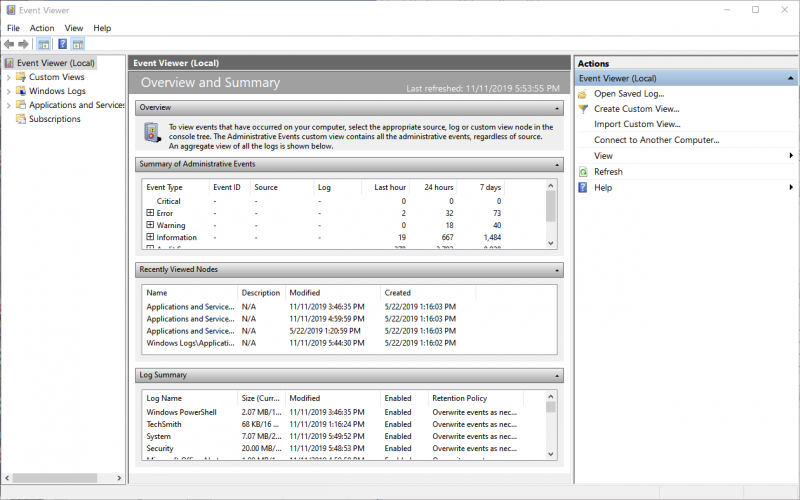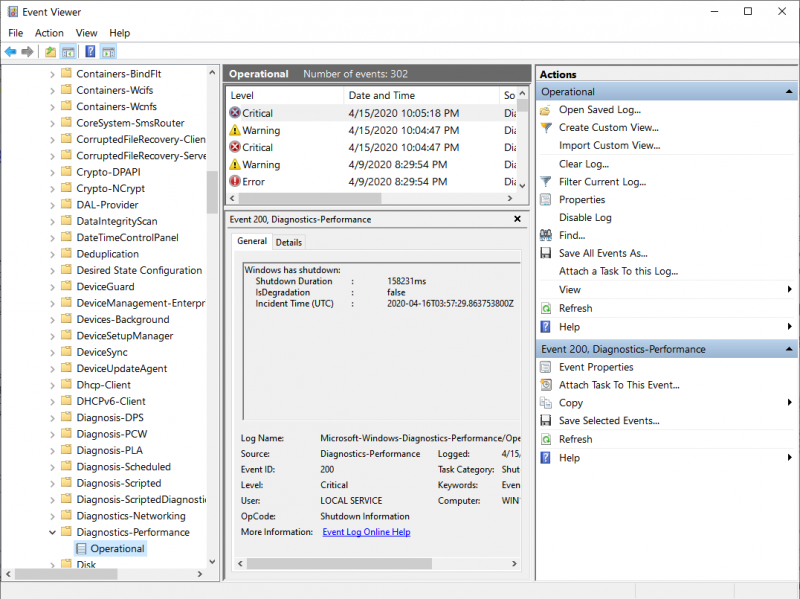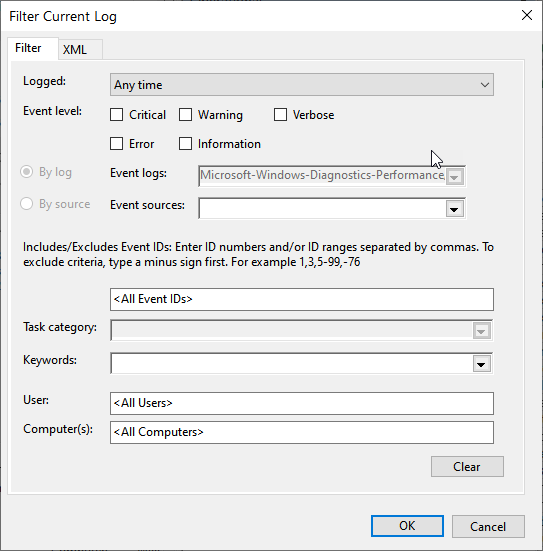The Windows Event Viewer captures a lot of information about your system – so much so that it may sometimes be hard to find what you're looking for. That's why the ability to filter logs is so handy. For example, let's say you want to see the times when the computer has been shut down or restarted. Start by displaying the Event Viewer. (The easiest way to do this is to use the search capabilities of Windows to look for "Event Viewer", without the quote marks.) (See Figure 1.)

Figure 1. Event Viewer main screen.
Since we're interested in system starts and shutdowns, use the left pane of the screen to navigate to Application and Services Logs | Microsoft | Windows | Diagnostics-Performance | Operational. After drilling down that far, the Event Viewer screen should be quite different from the main one you previously saw. (See Figure 2.)

Figure 2. Navigating to the
In the right pane, near the top, click on Filter Current Log. Windows displays the Filter Current Log dialog box. The Filter tab should be displayed in the dialog box. (See Figure 3.)

Figure 3. The Filter Current Log dialog box.
Here you can specify quite a few options: the time the event was logged, what event level you're interested in, what log and source are to be used, the Event IDs to include, the keywords to be used to filter the log, and the user and computers related to the log.
Since we are interested in startups and shutdowns at any time, for any event level, and since we've already navigated to the correct event log, we don't need to change anything here. Similarly, we don't care about the event sources or really anything else on the screen except for the Event IDs. As it turns out, a Windows startup is denoted by the Event ID of 100, and a Windows shutdown is denoted by the Event ID of 200. So, all we need to do is enter the two numbers, separated by a comma, into the textbox that currently says "<All Event IDs>.
Go ahead and enter "100,200" (without the quotes) in the textbox. Once you click OK, the log you're looking at immediately becomes filtered to only include those events whose ID is either 100 or 200. Now you can easily skim through the log and see the details related to each restart.
![]()
![]()
![]() This tip (12829) applies to Windows 7, 8, and 10.
This tip (12829) applies to Windows 7, 8, and 10.
The System event log holds messages generated by device drivers. This tip explains more about it.
Discover MoreWindows event logs are great resources to see what is "invisibly" going on with your system. By understanding the various ...
Discover MoreBy default, the event logs are implemented in a circular buffer, i.e., when its maximum size is reached, the oldest ...
Discover MoreThere are currently no comments for this tip. (Be the first to leave your comment—just use the simple form above!)
Copyright © 2025 Sharon Parq Associates, Inc.
Comments